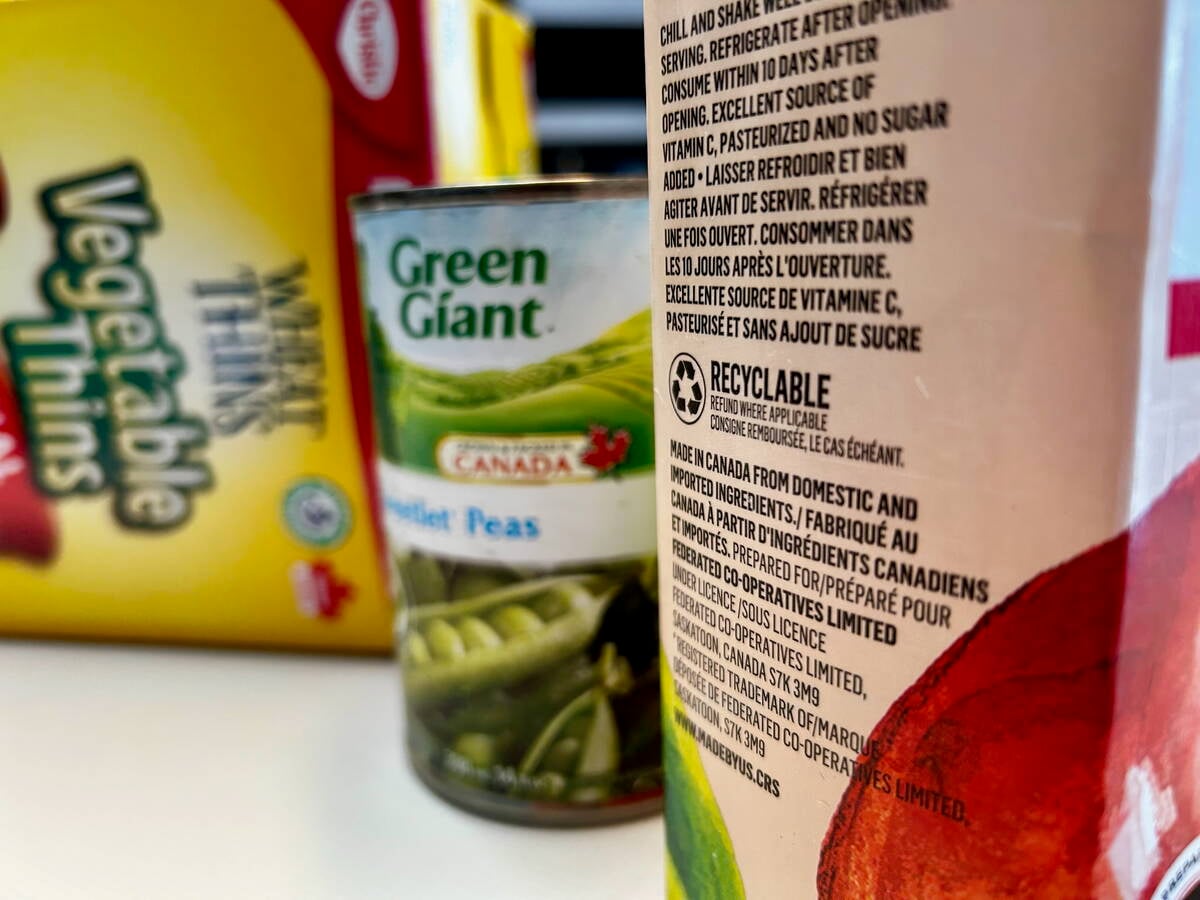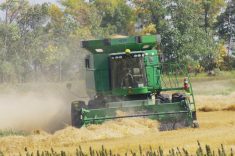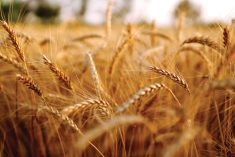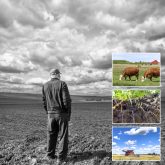Agriculture policy-makers need to be aware of ‘rent seekers,’ unintended consequences and the pitfalls of shoehorning more than one objective into a single policy.
University of Manitoba agricultural economist Ryan Cardwell delivered that message online February 9 during the 12th annual Kraft Lecture (watch the full lecture on YouTube), named for the late Daryl Kraft, a much-respected University of Manitoba agricultural economist who died in 2003.
Rent-seeking is a term economists use to describe those trying to influence policies to increase their share of the economic pie.
“So those (policies) can be in the form of higher prices, limits on competition, higher subsidies… ” Cardwell said.
Unintended consequences come with almost any public policy and sometimes are so harmful the policy should be reconsidered, he said.

“We should be aware of them and be able to quantify them and in some cases deal with them,” Cardwell said in a later phone interview Feb. 28.
A policy with multiple objectives should raise a “red flag,” he warned, citing Canada’s old food aid policy, which saw some the program’s funding go to farmers instead of the needy people.
The Canadian government used to donate wheat and other domestic food products as food aid, Cardwell said during the lecture. The idea was to help Canadian farmers, improve relations with the countries receiving the aid and help hungry aid recipients. But over time more of the benefits went to farmers at the expense of the needy. In the mid-2000s Canada opted to send money instead of food, allowing relief agencies to buy food closer to where it was needed. As a result more of Canada’s food aid dollars went to the needy, they received it faster and the food was more appropriate for the recipients’ dietary needs, Cardwell said.
Read Also

Unclear food labels hinder Canada’s ‘buy local’ surge
“Maple-washing” on Canadian food packaging makes label claims hard to keep straight and hurts both farmers and consumers trying to buy Canadian, economist says.
“So this was an absolutely enormous change in the way food aid has been handled for the last 70-plus years,” he said. “And it’s really a story of agricultural policy and how agricultural policy historically influenced the world of food aid.”
Powerful lobby
Farm organizations routinely lobby government for subsidies and other support making them rent seekers.
Last April the Canadian Federation of Agriculture (CFA) issued a news release warning Canadians they could face a food shortage due to COVID-19 and urged Canadians to lobby MPs to push the federal government to provide farmers with more aid.
“(W)ithout immediate assistance from the federal government, the Canadian agriculture sector cannot ensure our domestic food supply will remain secure for the immediate and long-term benefit of all Canadians,” the CFA’s April 16, 2021 release said.
“As farmers, we have carefully considered this message today,” CFA president Mary Robinson said during an accompanying news conference. “We do not want to create panic. At the same time, it would be irresponsible not to sound the alarm about the realities Canadian farmers are facing.”
The government had pledged $252 million; CFA wanted $2.6 billion.
Some observers were taken aback by the normally staid CFA’s scaremongering. Not Cardwell.
“It certainly did not surprise me,” he said in the interview. “I am used to seeing that kind of language from rents seekers. They are in the business of advancing the commercial interests of their producers and they hire professional lobbyists to tell the talking points they think will be effective.
“They’re doing what they’re paid to do.”
Are farmers good at rent-seeking?
“Absolutely, yes, they are very successful rent seekers,” Cardwell said.
“Primary agriculture in Canada — farming — is about one per cent of Canadian GDP (gross domestic product) and it receives a very outsized portion of attention and policy and subsidy.”
Long shadow
However, farmers provide the raw products for Canada’s agri-food system, which in 2020 employed 2.1 million people (accounting for one in nine Canadian jobs) and generated $139.3 billion (representing 7.4 per cent of Canada’s GDP), an Agriculture and Agri-Food Canada document says.
Canadian farmers averaged $3.4 billion a year in direct government subsidies between 2017 and 2021, according to Statistics Canada. It hit $5.9 billion last year.
The average Canadian grain farmer earns much more than the average Canadian and has access to government-funded programs such as AgriStability and AgriInsurance that doesn’t just stabilize farm income, but increases it, Cardwell said.
Moreover, in 2019 the average net worth of a Canadian farmer at $3.03 million was four times the Canadian average of $738,000, according to StatCan.
Meanwhile, despite drought in 2021, Agriculture and Agri-Food Canada (AAFC) forecasts net cash income for Canadian farmers in 2021 at a record $26.6 billion up 49 per cent from $17.8 billion in 2020. (StatCan will finalize the figures later this year.)
While much of the increase is due to higher farm product prices, subsidy payments are projected to jump 88.7 per cent “largely due to higher crop insurance payments driven by drought-related losses.”
AAFC estimates average net operating income per farm rose significantly in 2021 to approximately $145,074 — up 58.6 per cent from $91,494 in 2020.
That’s more than double the average Canadian average in 2021.
Risky business
Farm organizations argue given market and weather risk, government-funded support programs are justified.
Cardwell agrees farmers may need income stabilization, but he says the private sector can provide them.
“There is private insurance for all kinds of things, but what we observe in agriculture is farmers won’t buy a fair price insurance program because they know they don’t have to,” he said. “The government will subsidize it.
“And if they (private sector) can’t (stabilize farm income) because of some market failure… there might be a role for policy, but the policies that we have now don’t just try to stabilize, they increase (farm) incomes.”
AgriInsurance in Manitoba allows farmers to insure up to 80 per cent of their long-term average yield. Triggering a payout therefore is not as profitable as an average crop. But it still raises income because farmers pay just 40 per cent of the crop insurance premium, Cardwell said.
“So it’s a 60 per cent subsidy on the premium for AgriInsurance,” he said. “I am not sure but it’s probably close to a billion dollars subsidy just on that one insurance program alone.
“If you open a bookshop or a coffee shop or any other small enterprise there is huge risk, which typically does not receive a 60 per cent subsidy rate on a premium of any kind. There is typically no insurance. It’s (farming) unusual compared to other industries.”
Supply management, while not a government subsidy, exists because of government policy allowing dairy, egg, chicken and turkey producers to control domestic production and restrict imports keeping domestic prices higher than they would be in an open market.
“(U)ltimately the target beneficiaries are farms,” Cardwell said during his lecture.
“So if a government policy then imposes a policy that pushes prices up, that act is an implicit tax on food.”
[Read more: Supply management views especially strong]
It’s also a regressive one because it hurts poor people more than the rich, he said.
The poorest one-fifth of Canadians pay about 2.5 per cent of their income for supply-managed products compared to 0.5 per cent for the richest one-fifth, Cardwell said.
Supply management doesn’t just stabilize farm income, it increases it, he said.
In 2019 average Canadian household income was $89,000 compared to $200,000 for dairy-producing households and $300,000 for other supply-managed farms, Cardwell said.
“(O)n average, the consumers who pay for this policy through higher prices are transferring resources to these groups,” he said.
“The average household income for dairy farms is a little over double the Canadian average,” Cardwell said during the interview.
“If you are interested in a policy that increases that (farm) household’s income, you should be interested in what their income is, relative to the people who are paying for the benefit.”
Canada’s Goods and Services Tax (GST) and carbon tax are progressive taxes because lower-income people get rebates offsetting some of the cost, Cardwell said.
“A carbon tax by almost any measure is the most efficient way that we can come up with targeted greenhouse gas emissions,” he said during a question period after the lecture. “So that’s the policy to pursue. It creates unintended consequences but we can address those with the rebate.”
Rebates to poorer people could offset the harmful impact of supply management, but if the goal of supply management is to boost farm income there are simpler ways to do it “than adding, on top of that, a bunch of other stuff to undo the unintended consequences.”
















